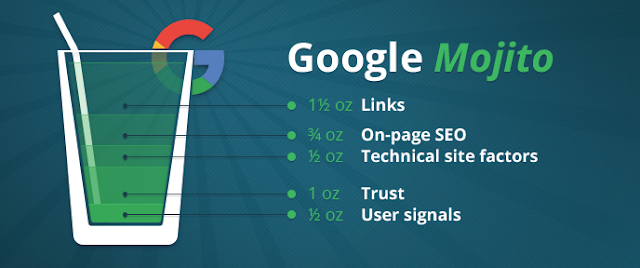 By Sarah Morgan
By Sarah Morgan
Alongside cloud technology, usage of Microsoft Azure is also growing rapidly. Microsoft CEO, Satya Nadella, said there are now over 5 million organisations using Azure Active Directory, and over 50 trillion objects stored in Azure as a whole. This highlights the scale of Microsoft’s cloud operations, with Microsoft keen to grow and develop its cloud services in the near future.
 |
| Image from Microsoft |
Specialist: Implementing Microsoft Azure Infrastructure Solutions
The Microsoft Specialist: Implementing Microsoft Azure Infrastructure Solutions certification is aimed at Server Engineers or Architects. It proves you know have the knowledge and skills to migrate your existing on premise architecture to Microsoft Azure. Perfect for anyone needing to migrate their legacy systems to the cloud where you'll need to create Azure virtual machines and networks, implement and manage Azure storage solutions, implement cloud and mobile services among other skills in migrating and implementing Azure.
To achieve the Specialist: Implementing Microsoft Azure Infrastructure Solutions certification, you’ll need to pass Microsoft exam 70-533. If you're looking to develop the skills and knowledge to pass this exam, you'll need to get to grips with course 20533B: Implementing Microsoft Azure Infrastructure Solutions, which is aligned to the 70-533 exam.
Firebrand has a 3 day accelerated version of the Implementing Microsoft Azure Infrastructure Solutions course, 50% faster than traditional courses. You'll learn how to:
- move your virtual machines, websites, storage and data services to Microsoft Azure
- manage it all in the long term
- get skilled up on Azure features like:
- Active Directory
- Content Delivery Network
- SQL Data Services
- managing Azure in a hybrid environment.
 |
| Image from Microsoft |
Specialist: Developing Microsoft Azure Solutions
The Specialist: Developing Microsoft Azure Solutions certification is aimed at Developers looking to specialise and take their skills onto Azure. This certification proves you can create an environment for web development on Azure virtual machines as well as design cloud applications on Azure.
You need to pass Microsoft Exam 70-532 to achieve the certification. You should look to sit course 20532B: Developing Microsoft Azure Solutions as this is aligned to the 70-532 exam. This will give you the best possible chance of getting Specialist: Developing Microsoft Azure Solutions certified.
Firebrand has an accelerated 3 day Specialist: Developing Microsoft Azure Solutions course. This is 50% faster than traditional training courses and will teach you to develop the following skills:
- ASP.NET web architecture and development skills
- Hosting on Azure
- Storage and management of SQL data on Azure.
Specialist: Architecting Microsoft Azure Solutions
The Microsoft Specialist: Architecting Microsoft Azure Solutions certification is most suited to Azure Cloud Architects or Azure Consultants. It demonstrates your skills to design and manage the technologies Azure offers and how they work together. It is best suited to those looking to design public and hybrid Azure solutions in their business.
In order to achieve the Microsoft Specialist: Architecting Microsoft Azure Solutions certification, you’ll need to pass exam 70-534: Architecting Microsoft Azure Solutions. Whilst there is no specific course aligned to the exam, you can sit Firebrand’s accelerated 7 day course which includes all the skills you’ll need for the 70-534 exam. It covers topics like:
- Designing best practices for virtual networks
- Network Security Groups (NSGs) and how they help to create perimeter networks
- System Centre products and how they integrate with Azure
MCSD: Azure Solutions Architect
The MCSD: Azure Solutions Architect is the most comprehensive Azure specific certification currently available and combines all three of the Specialist certifications. As the title suggests, it is aimed at Azure Solutions Architects, proving you have all the skills to design, build and deploy an entire solution on Azure. To achieve the certification, you have to pass all three specialist exams 70-532, 70-533 and 70-534.
This means the best way to pass these is to sit all three Microsoft Specialist courses, aligned to each exam.
The best way to this is by sitting Firebrand’s accelerated 7 day MCSD: Azure Solutions Architect course, which is 40% faster than traditional training. It includes curriculum for Implementing Microsoft Azure Infrastructure Solutions, Developing Microsoft Azure Solutions and Architecting Microsoft Azure Solutions, which are aligned to all three exams. This covers the full range of Azure topics including:
- Designing cloud applications for resiliency
- Hosting web applications on Azure
- Implementing and managing virtual networks
- Planning and implementing data services
MCSA: Linux on Azure
The newest Azure certification on the market, the MCSA: Linux on Azure, is the first ever certification from a Microsoft and Linux collaboration. It is aimed at Linux Systems Administrators, Engineers and support staff. It proves your skills as a Linux systems administrator and your abilities to migrate and use these systems on Microsoft Azure.
You need to pass exam 70-533 Implementing Microsoft Azure Infrastructure Solutions and the Linux Foundation Certified System Administrator (LFCS) exam. Sitting courses 20533B and LFS220: Linux System Administration will prepare you for both exams.
On LFS220, you’ll learn about Linux processes, filesystems, backup and recovery methods and networking. The 20533B course will then cover Azure migration, so you can use your Linux systems on Azure. Firebrand has an accelerated MCSA: Linux on Azure course, which can get you certified in just 5 days.
What else?
As well as the Azure specific certifications we’ve mentioned above, there are other Microsoft certifications that include very useful skills relating to Azure. These could be useful to you before specialising with an Azure certification. Check out a breakdown of these below:
MCSA: Windows 10 – Microsoft’s cross-platform vision is led by Windows 10 and included in this is its combination and integration with Azure. Microsoft’s MCSA: Windows 10 certification is aimed at Support Technicians and Systems Administrators and teaches you about security, administration and technical support for Microsoft’s newest operating system. Crucially, the course also covers how to integrate Windows 10 with Microsoft Azure and features like Active Directory, Microsoft Intune and Azure Rights Management.
MCSA: Office 365 – Office 365 is a cloud-based technology. This means it is closely linked to Azure. Much of what the MCSA: Office 365 covers is integrating Office 365 with supporting technologies including Azure Active Directory, SharePoint Online and Exchange Online. All of these are based in the cloud. Getting MCSA: Office 365 certified is a great way to start building your cloud and Azure skills, whilst of course getting in depth skills on Office 365. This certification is aimed at Systems Administrators looking to specialise in Office 365, or if you need to setup Office 365 in your business.
MCSA: Windows Server 2012 – Getting certified in another of Microsoft’s most prominent technologies is most useful for Server Engineers, Server Support or Server Administrators. It gives you all the skills to implement, configure and manage Windows Server 2012. The certification also includes a brief overview of Azure and how Windows Server 2012 relates to it. This is an important factor as many System Administrators are using Azure cloud infrastructure that uses Windows Server 2012. If you’re planning to run your Azure architecture with Windows Server 2012, this certification gives you a useful bridge between the two technologies.
Now you know what skills each Azure certification demonstrates, you should be able to find an Azure certification that helps you achieve your goals. The range of Azure certifications from Microsoft is still relatively young and growing and as Azure develops, so will the accompanying certifications. This means if there isn’t an Azure certification that helps you do exactly what you need right now, Microsoft may well develop one in the near future.
About the Author:
Sarah writes for Firebrand Training on a number of IT related topics. This includes exams, training, certification trends, project management, certification, careers advice and the industry itself. Sarah has 11 years of experience in the IT industry.












